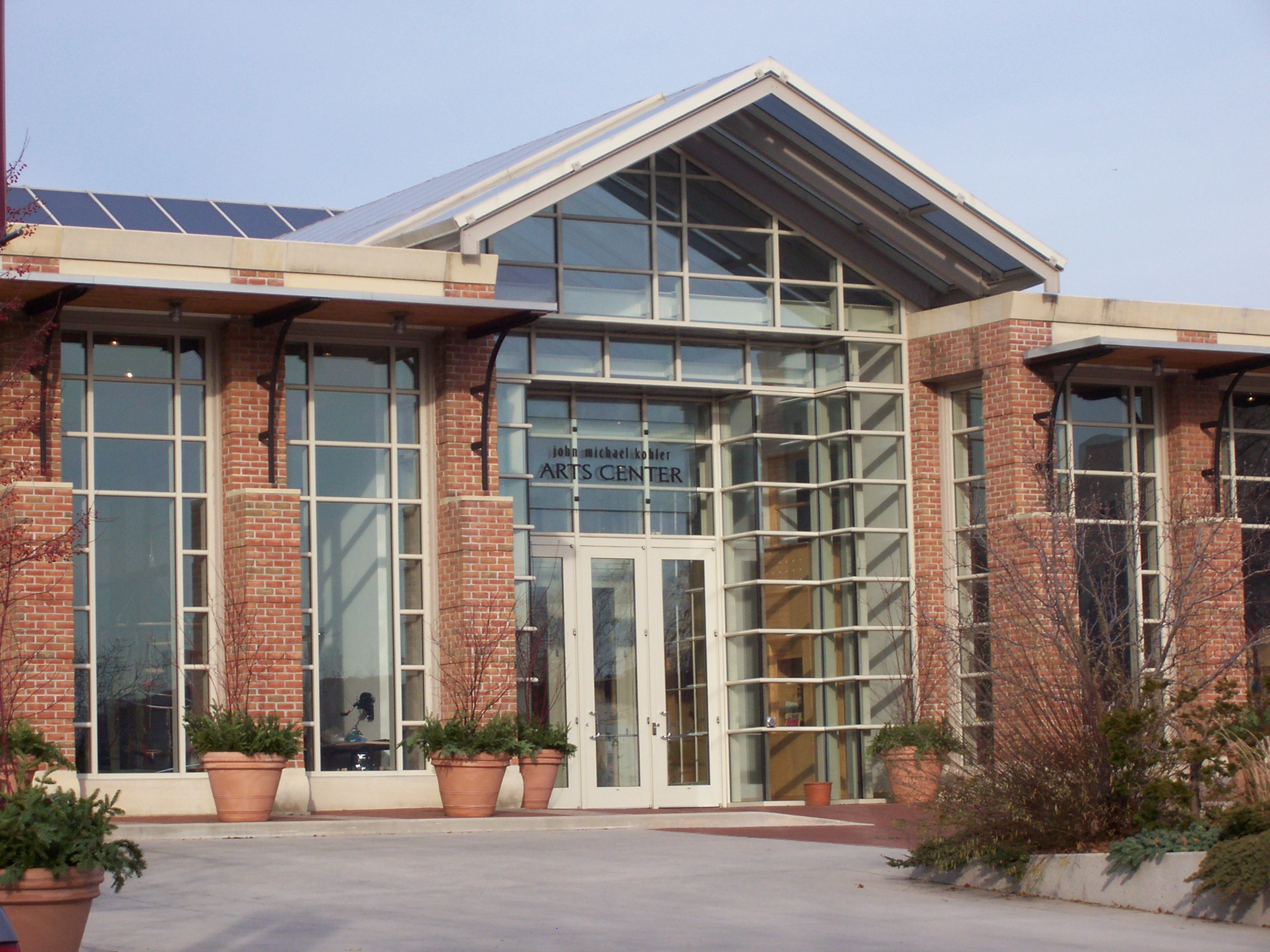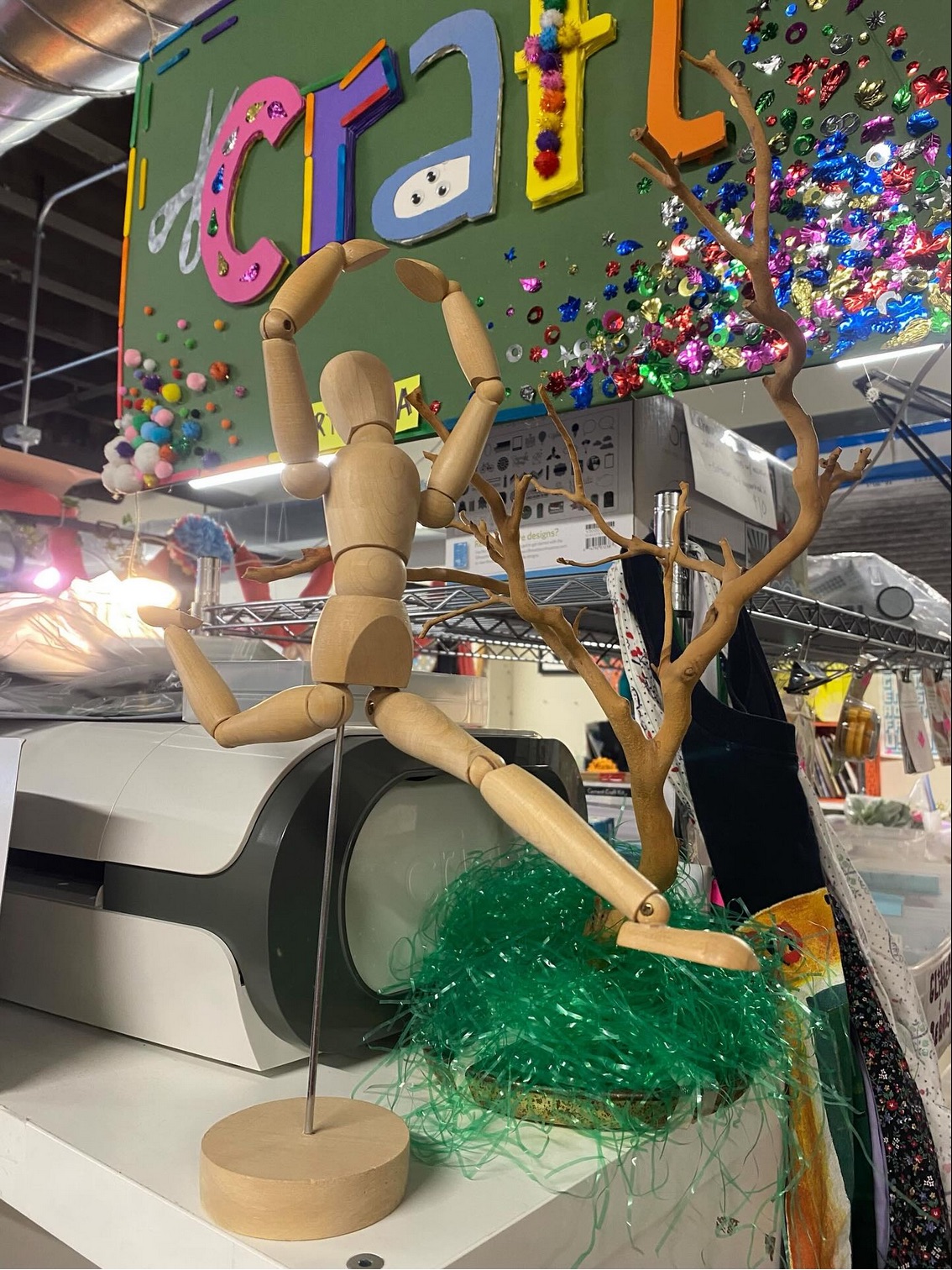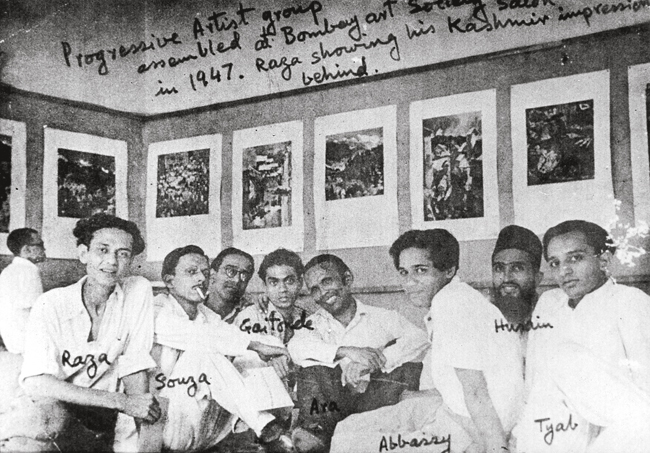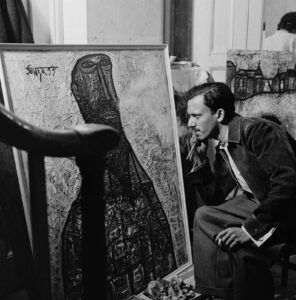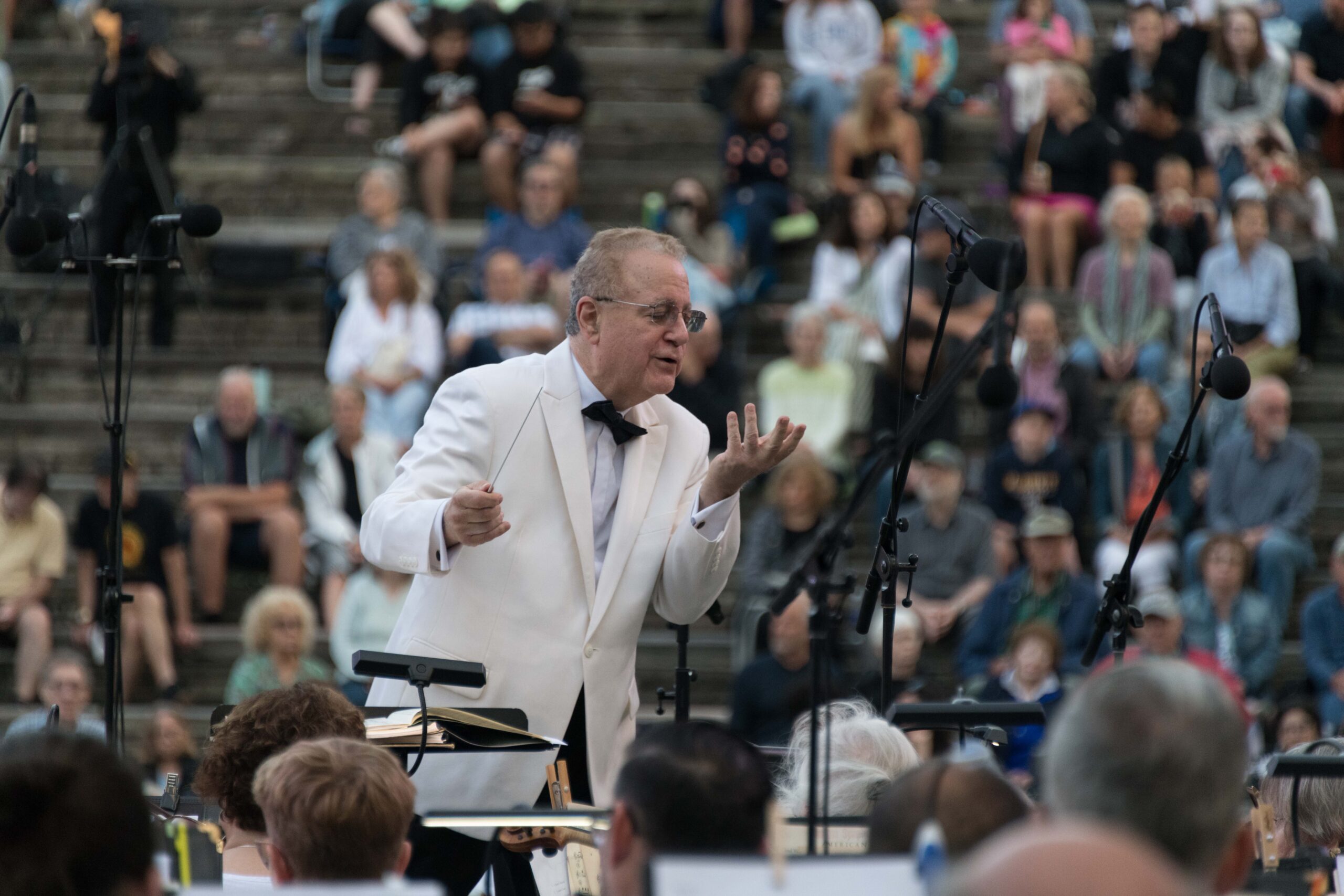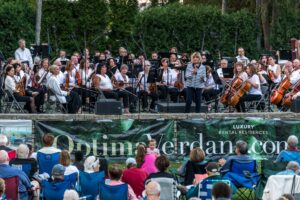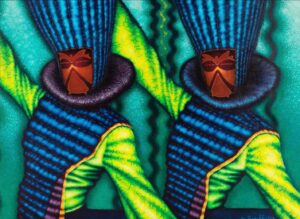This fall, the John Michael Kohler Arts Center in Sheboygan unveiled Recent Acquisition: Roger Brown Study Collection, an evocative exhibition celebrating the legendary Chicago Imagist’s deep archive of art, design, and everyday objects. The show marks the arrival of Brown’s expansive study collection to the Arts Center and its Art Preserve — a museum dedicated to artist-built environments and immersive creative worlds.
Roger Brown (1941–1997) was known for his bold, narrative paintings — vivid slices of American life rendered in rich color and sly humor — but just as compelling was the world he built around his work. His Chicago home and studio on North Halsted Street were filled floor to ceiling with what he called his “visual diary”: folk art, thrift-store finds, roadside souvenirs, toys, furniture, and artworks by friends and peers. Together, they formed a living environment that blurred the line between art and life, between collecting and creating.
“I was building a world to live in, not just pictures to look at.”
— Roger Brown
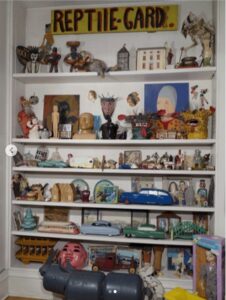
From Chicago to Sheboygan
The transfer of Brown’s collection from the School of the Art Institute of Chicago to the Kohler Foundation and the John Michael Kohler Arts Center represents a major cultural moment. Installed at the Art Preserve, the collection now enters a conversation with other artist environments — immersive, hand-crafted worlds that reveal how artists think through space, time, and material.
The exhibition re-creates aspects of Brown’s domestic installation: shelves crowded with folk sculpture, thrift-store paintings, and bits of Americana. One vignette evokes the stairwell of his Chicago home, where each object was placed with curatorial precision and intuitive wit. These scenes demonstrate how Brown’s way of seeing extended beyond the canvas — his architecture of display was as intentional as his art.
Architecture, Art, and Everyday Life
Brown was not an architect, yet he understood the poetic potential of space. His layered environments anticipated contemporary ideas about spatial storytelling — the notion that how we organize and inhabit our surroundings reveals who we are. The Kohler exhibition highlights this connection beautifully, showing how Brown’s interior worlds serve as both subject and structure for his creative practice.
Walking through the installation feels like stepping into an artist’s mind — every object charged with meaning, every angle composed. It’s an experience that transcends nostalgia, instead celebrating the improvisational architecture of everyday beauty.
In Conversation with Optima®’s Vision
At Optima®, we see a profound resonance between Brown’s vision and our own design philosophy. His ability to integrate art, architecture, and the lived environment mirrors the way our communities blur boundaries between structure and landscape, indoors and outdoors, individual expression and collective experience.
Just as Brown’s collection reveals how objects tell stories of place and time, Optima buildings invite residents to shape their own layered narratives within spaces defined by light, texture, and connection. Both perspectives embrace the idea that design is not static — it is a living framework that evolves with the people and ideas it holds.
In Sheboygan, Recent Acquisition: Roger Brown Study Collection reminds us that every environment — whether a home, studio, or architectural space — holds the potential to become a work of art. Through attention, arrangement, and imagination, we give form to the worlds we inhabit.
Visit the Exhibition
Recent Acquisition: Roger Brown Study Collection
John Michael Kohler Arts Center / Art Preserve
On view through Spring 2026 in Sheboygan, Wisconsin
For hours, directions, and visitor information, visit jmkac.org.
